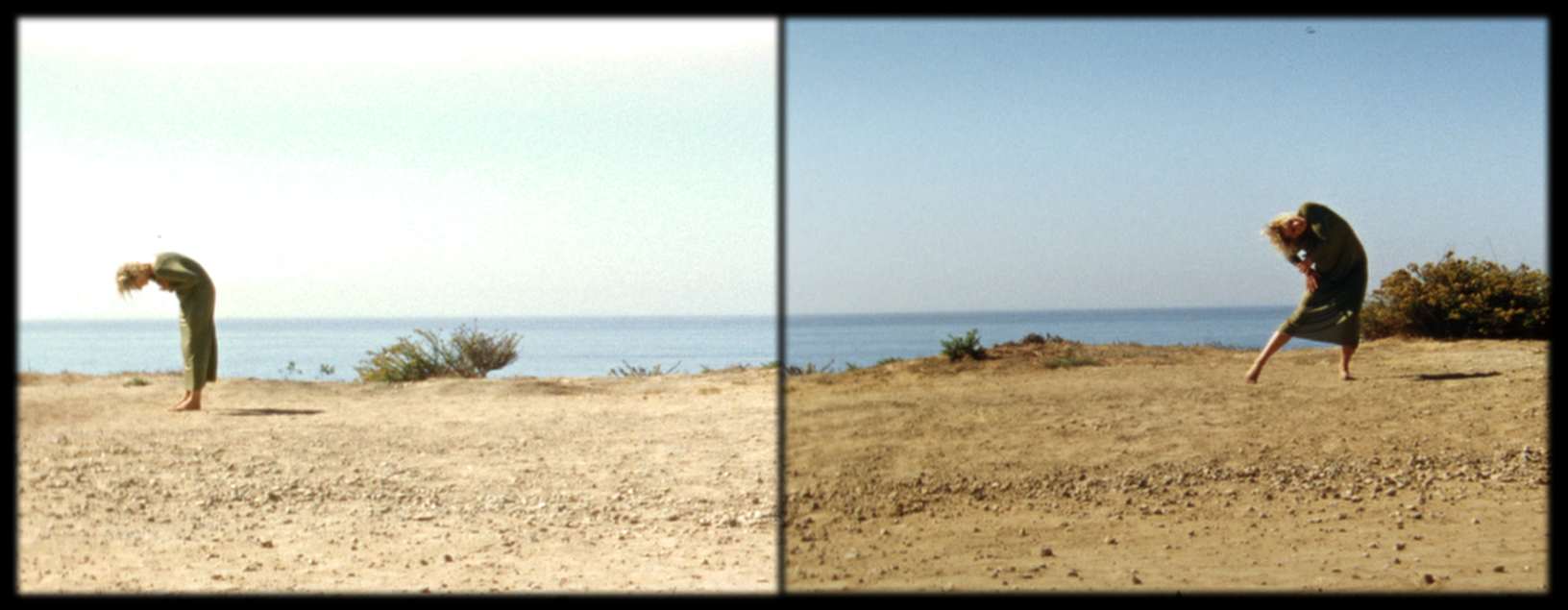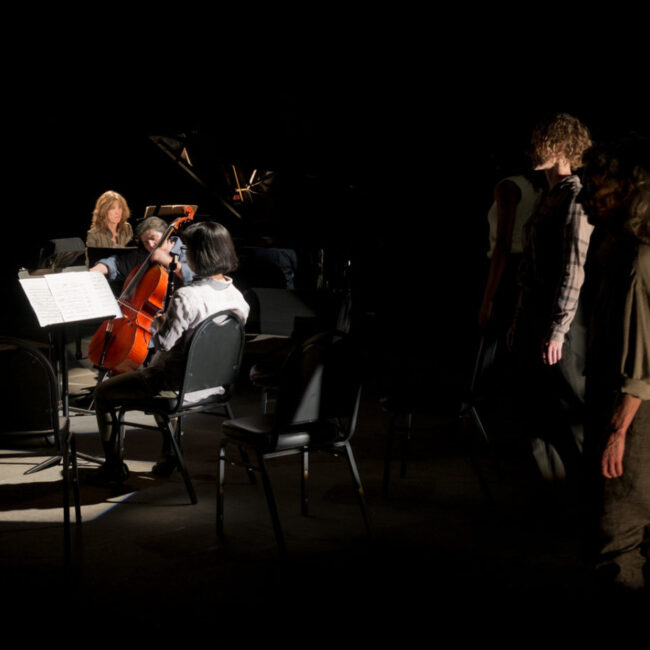Wandering (still) is a dual-screen, 16 mm film transferred to digital. Premiered at the Orange County Museum of Art as part of the California Biennial, 2010. Also shown as part of Split Moment, Cal State Long Beach. It was also accompanied by live performances, Wandering (detail).
This piece is described by curator, Mary Coyne in the Split Moment Catalog:
Flora Wiegmann addresses live performance in her film Wandering (Still), in which she dances on an arid bluff off Malibu’s Pacific Coast Highway. The thirteen variations in Wandering (Still) were informed by a pair of historic photographs of German Expressionist dancer Mary Wigman and her dance company. The photographic stills from documentary footage show Wigman and twelve female dancers enacting expressive choreographic gestures in a typical Modernist style. While Wiegmann researched Wigman and her work, she deliberately refrained from watching any film footage from which the historic photographs are derived. In this way, Wiegmann was detached from the actual event of Wigman’s performance, engaging with it analytically, rather than being “inspired” by it.
For each of the women in the historical photographs, Wiegmann imagined a possible narrative behind their expressive poses and choreographed what could be called a “reverse documentation.” While photographs typically reduce an experience to a single image, Wiegmann used them as a point of origin for a contemporary performance documented on 16mm film. The historic photos, seen as forms of mediation of a live event, are very different than Wiegmann’s interpretation of them. Underscoring the gap between the event and its subsequent reception, Wandering (Still) amplifies the effect of difference and deferral and the ways in which meaning is derived from historical artifacts, such as the photographs of Wigman and her company.
Wiegmann captured Wandering (Still) with two cameras, operated side-by-side. As a result of this mode of production, the wide panorama is split by the gap between the frames. This technique re-creates the stereo visual reception of the human eyes and through two different visual recording devices suggests independent visual experiences. The film highlights Wiegmann’s momentary disappearance as she moves across the space between the two cameras. As a recorded document, the dance appears discontinuous. Her disappearance into the visual gap is central to the definition of film and dance. Every image or gesture, whether viewed through film or with the “naked eye,” is framed and in part defined by this negative space. Wiegmann’s gestures are made visible by the existence of the gaps of non-movement between them. By dancing through the camera frames, Wiegmann emphasizes this blank space, calling attention to the discrepancies of presence. Each moment of performance is simultaneously partially present and partially not.
Click here to read a review by Carol Cheh








